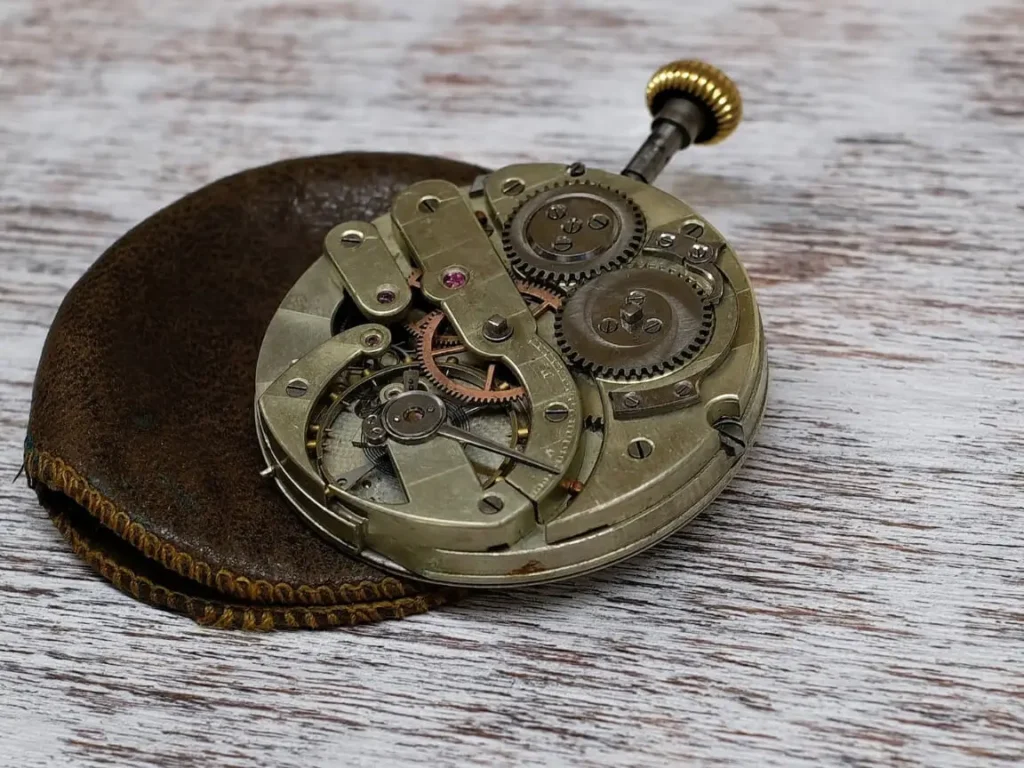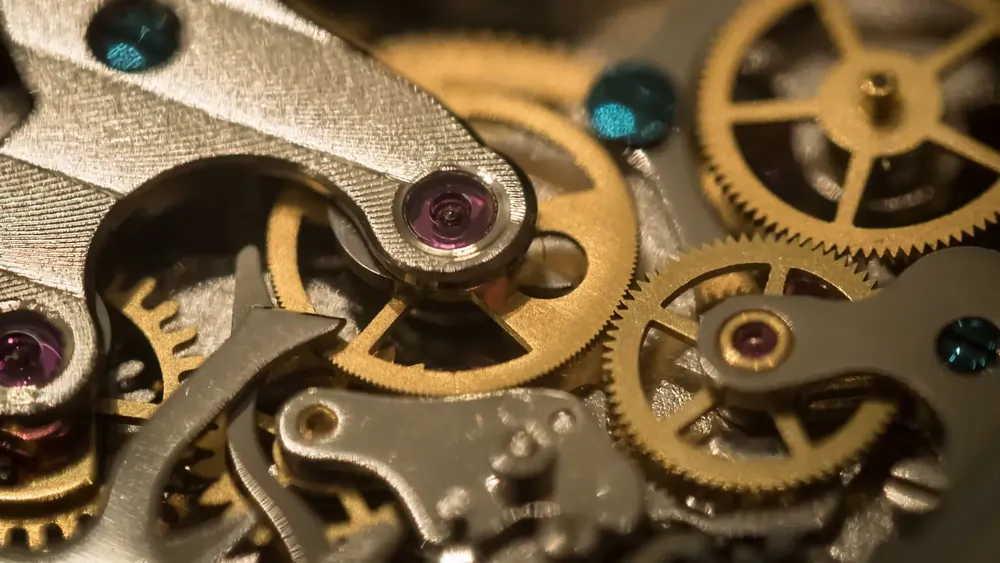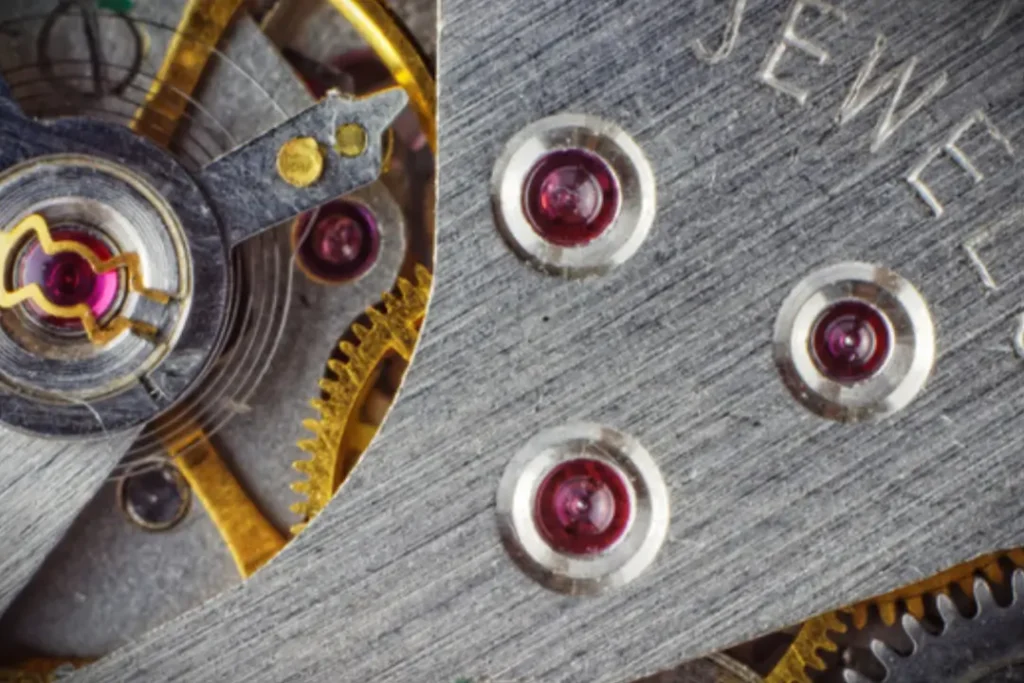Watch Movement Parts: A Complete Guide to How Watches Work
Ever looked at your watch and wondered what makes it tick? Inside that small case lies an intricate world of gears, springs, and precision engineering. Whether you’re a budding watch enthusiast or simply curious about the timepiece on your wrist, understanding watch movements helps you appreciate these mechanical marvels and make informed decisions when buying or maintaining one.
In this guide, we’ll break down every essential component of a watch movement in plain English, so you’ll know exactly what’s powering your timepiece. Let’s get started with the basics.
Contents
What Is a Watch Movement?
Think of a watch movement as the engine of your timepiece. It’s the mechanism responsible for moving the hands, tracking time, and powering any additional features your watch might have. Watch enthusiasts often call this the “caliber.”
Watch movements come in two fundamental types: mechanical and quartz. Mechanical movements can be further divided into manual and automatic variants:
Mechanical Movements:
- Manual (Hand-wound): You physically wind the mainspring by turning the crown
- Automatic (Self-winding): Uses your wrist motion to wind the mainspring through a rotor
Quartz Movement:
- Powered by a battery
- Uses electronic oscillations of a quartz crystal
- Generally more accurate and less expensive than mechanical movements
We’ll focus mainly on mechanical movements since they contain the most intricate parts, and understanding them will help you grasp both manual and automatic systems. Plus, these are the movements most valued by watch enthusiasts and collectors for their craftsmanship and heritage.
Essential Parts of a Mechanical Movement

The Mainspring: Your Watch’s Battery
The mainspring is essentially a tightly coiled strip of metal that stores energy when you wind your watch. Unlike what you might expect, it’s not actually a spiral spring like you’d find in a mattress – it’s more like a rolled-up metal ribbon. You can wind the mainspring manually by turning the crown or automatically through the natural motion of your wrist in automatic or self-winding watches.
The Gear Train: Power Distribution System
Once the mainspring starts unwinding, its energy flows through the gear train – a series of precisely engineered wheels that work together to control the release of power.

Here’s what happens:
- The center wheel rotates once per hour (driving the minute hand)
- The third wheel transfers power while changing the rotation direction
- The fourth wheel rotates once per minute (driving the second hand)
- The escape wheel delivers regulated pulses of energy to the balance wheel
Each gear reduces the speed of rotation while maintaining enough torque to move the hands. It’s a delicate balance – too much friction and the watch stops, too little and it runs fast.
The Escapement: The Traffic Controller
The escapement is arguably the most ingenious part of a mechanical watch. It converts the continuous force from the gear train into regulated, periodic releases of energy. Without it, your mainspring would unwind in seconds.
An escapement is made up of three main parts: the escape wheel, the pallet fork, and the balance wheel. The escape wheel is a toothed wheel connected to the gear train. The pallet fork, which has two small arms called pallets, interacts with the teeth of the escape wheel. Meanwhile, the balance wheel oscillates back and forth, powered by energy from the escapement.
Here’s how it all works:
- The tightly wound mainspring stores energy, which is gradually released into the gear train.
The gear train carries the energy to the escapement in a smooth, continuous motion.
The escape wheel, connected to the gear train, receives this energy and starts rotating.
The teeth of the escape wheel engage with the pallet fork, which alternately locks and unlocks the wheel’s movement.
Each time the pallet fork unlocks, it transfers a small amount of energy to the balance wheel, causing it to oscillate back and forth.
- The pallet fork’s locking and unlocking ensure the escape wheel moves forward one tooth at a time.
Each “tick” you hear from the watch is the escapement letting a tooth slip by. This happens 6-8 times per second in modern watches, creating the steady ticking sound and ensuring accurate timekeeping.
The Balance Assembly: The Heartbeat
The balance wheel and hairspring work together like a tiny pendulum, oscillating back and forth at a consistent rate. This assembly is what actually keeps time in your watch. The hairspring is particularly crucial – even a slight bend or irregularity can throw off timing significantly.
Pro tip: If your watch suddenly starts running very fast or slow, the hairspring might have become magnetized. A watchmaker can easily demagnetize it in minutes.
Additional Critical Components
Jewels: Nature’s Bearings
Those “21 jewels” advertised on your watch face aren’t just for show. These synthetic rubies or sapphires serve as bearings at points of high friction. They’re harder than steel and require minimal lubrication, significantly reducing wear.

Key locations for jewels include:
- Balance wheel pivots
- Escape wheel pivots
- Pallet fork pivots
- Center wheel bearings
More jewels don’t necessarily mean better quality. A basic mechanical movement needs about 17 jewels to function properly. Anything beyond 27-29 jewels is usually marketing hype unless the watch has genuine complications.
Plates and Bridges: The Foundation
The movement’s components are mounted between metal plates and bridges. The main plate (or bottom plate) forms the foundation, while bridges secure various wheels and mechanisms from above.
Quality movements typically feature:
- Precise finishing on visible surfaces
- Secure screw mounting points
- Robust materials (brass or steel)
- Proper spacing for maintenance access
Special Features and Complications
When you start adding features beyond basic timekeeping, additional components come into play. A date mechanism, for instance, requires:
- A date wheel
- Date advancing mechanism
- Quick-set components (in modern watches)
Chronograph movements are even more complex, adding:
- Column wheel or cam mechanism
- Additional gear trains
- Multiple subdial mechanisms
- Start/stop/reset components
Care and Maintenance: Keeping Time
A well-maintained mechanical movement can last generations. Here are practical signs your watch needs attention:
Time to visit a watchmaker when:
- Timing varies by more than 15 seconds per day
- The power reserve drops significantly
- You hear unusual noises
- The date doesn’t change properly
- The winding feels gritty
Regular maintenance intervals:
- Basic service: Every 4-5 years
- Water resistance check: Annually if you swim with your watch
- Magnetization check: As needed (if timing suddenly changes)
Movement Quality Indicators
Not all movements are created equal. Here’s what distinguishes quality movements:
Construction quality:
- Tight tolerances between components
- Superior finishing on visible parts
- Robust materials in high-stress areas
- Smooth operation of all functions
Major manufacturers known for quality:
- ETA (Swiss)
- Sellita (Swiss)
- Miyota (Japanese)
- Seiko (Japanese)
Remember: An expensive movement doesn’t guarantee better timekeeping. Many mid-range movements can match or exceed the accuracy of luxury calibers. The premium often pays for finer finishing, more exotic materials, or complex complications.
The Heart of Your Timepiece
Understanding watch movements helps you:
- Make informed purchase decisions
- Recognize when service is needed
- Appreciate the craftsmanship in your timepiece
- Communicate effectively with watchmakers
Whether you choose a simple three-hand movement or a complex chronograph, knowing what’s inside your watch enhances the ownership experience. Remember, a mechanical watch movement is one of the few machines you can own that can run continuously for decades with proper care.
Next time you hear that gentle tick from your wrist, you’ll know exactly what’s happening inside – a perfect symphony of engineering working to keep you on time.